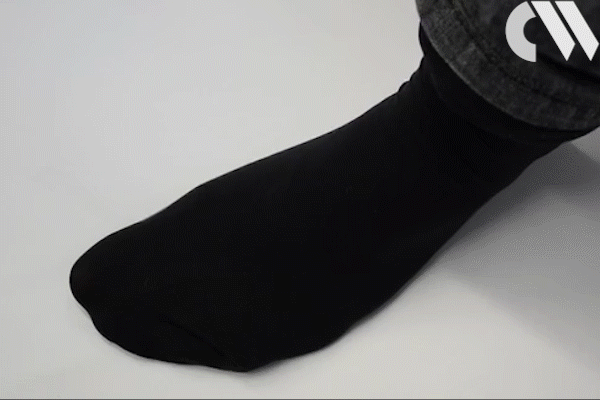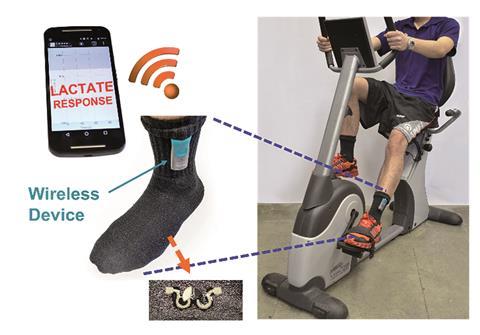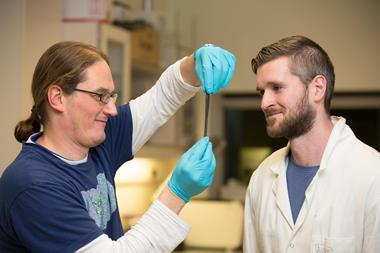Stretchable sweat-powered lactate sensors can now be worn on your feet

Joseph Wang and colleagues from the University of California, US, have attached biofuel cell devices directly onto wearable textiles.1 These self-powered sensors can detect levels of glucose or lactate in sweat, providing support for diabetes patients, or helping users to monitor their stamina and fitness.
Using a combination of stretchable carbon nanotube (CNT) based inks and a unique serpentine design,2 Wang’s team has overcome the problem of power loss resulting from continuous stretching and twisting that commonly occurs with wearable energy-harvesting devices.

The researchers applied layers of an elastomer, Ecoflex, and polyurethane, followed by the serpentine CNT electrodes. Both are printed directly onto textiles in a process whereby ink is transferred onto a material using a mesh screen and a stencil. The anode is functionalised by immobilising an enzyme – either glucose oxidase or lactate oxidase – on its surface, enabling detection of either glucose or lactate, respectively, in the wearer’s sweat. Oxidation of the metabolites powers the sensor, their concentration determining the signal output.
Wang’s team tested their devices in socks worn by human subjects, confirming both their robustness and potential application in next-generation smart clothes.
References
1 I Jeerapan et al, J. Mater. Chem. A, 2016, DOI: 10.1039/C6TA08358G (This article is free to access until 04 January 2017)
2 A J Bandodkar et al, Nano Letters, 2016, 16, 721 (DOI: 10.1021/acs.nanolett.5b04549)












No comments yet